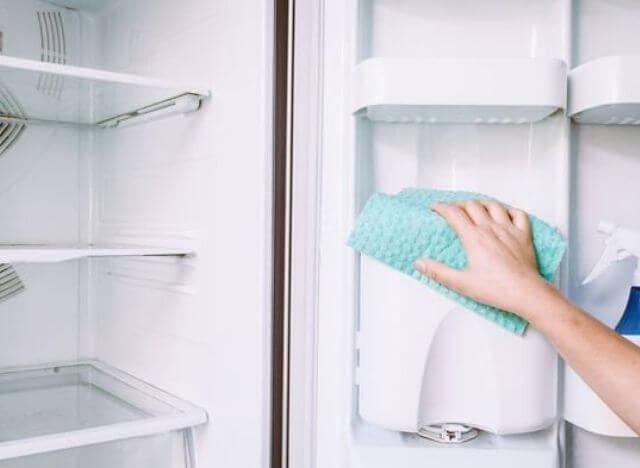Nowadays, it is hard to find any house which does not have at least one fridge. We use the fridge to keep our food cool and fresh for longer. However, it can’t stop the food inside from being spoiled or moldy in all circumstances. So, if you are looking for some effective ways to clean and prevent mold in your refrigerator, this article might be helpful with a lot of valuable information.
What causes fridge mold?
The untimely care of the refrigerator is the main reason for mold to appear. It is easy for mold to spread via air or any surface contact. When any type of food becomes moldy, spores from it can expand via air circulation or the shelf.
Other causes:
- Your fridge is old and has expired shelf life.
- The fridge contains rotten fruit, acidified fruit, cereals, or soups with traces of fungus.
- There are spilled bags inside the fridge.
- The poorly packaged of raw meat or fish.
- When the humidity in the refrigerator is high. This happens if storing food in dishes without a lid, fresh fruit leaks from sealed bags, or clogging the drain hole.
In addition, if your fridge is unplugged for a long period of time, mold might form inside it easily. Otherwise, sometimes, a mechanical issue can have a negative effect on how your fridge works and cause mold.
All these cases can create a favorable environment for the growth and spread of mold.
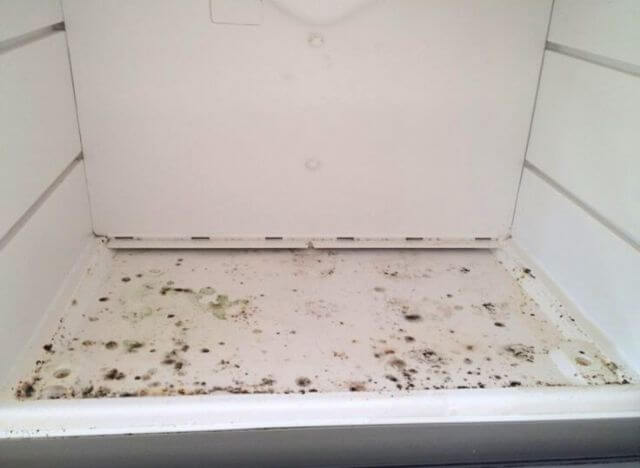
Is the mold dangerous?
The mold seems to be very harmful for humans. It can create a lot of toxic chemicals named mycotoxins. There is an allergic reaction coming up as a result of it such as sneezing, red-colored eyes, skin rash or a runny nose.
Besides, it might lead to asthma attacks. Even sometimes, mold can lead to death.
In general, its negative influences depend on many factors including the amount used, exposure time, age or health condition of the consumer. So the diseases would be varied among individuals.
How to prevent mold growth in the refrigerator?
There are many methods you should apply to keep your refrigerator away from any mold. Here’s how:
- Regular cleaning with some ingredients such as baking soda, bleach, or vinegar.
- Keep the humidity level under control.
- Make sure that all your fruits and vegetables are totally dried before storing
- Check regularly whether or not your food is still edible.
- Cover your food in your fridge by using foil, plastic wrap or a container.
- Avoid to put too many food in your fridge and try to eat them before they go bad.
- Do not put foods that are going to spoil in the refrigerator. If you do this, you will inadvertently create a colony of bacteria inside the refrigerator, especially foods wrapped with leaves. They have the outer layer of leaves will be easy to have fungus and mold appear.
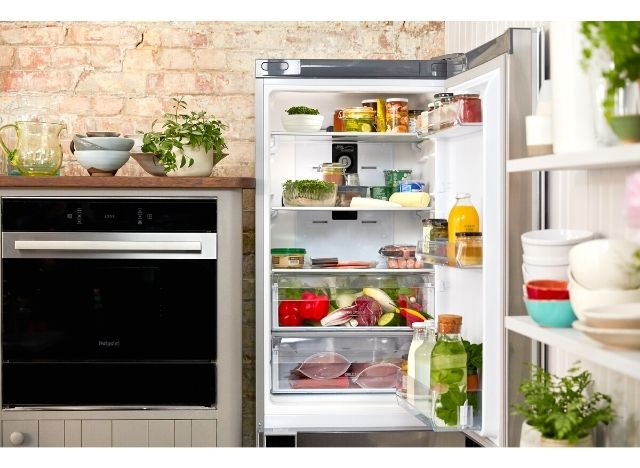 Regular cleaning will prevent mold in the fridge and keep your food fresh
Regular cleaning will prevent mold in the fridge and keep your food fresh
Besides, if this issue gets worse, you should contact a mechanic to help you solve it completely. As mentioned above, some mechanical issues can cause the development of mold in your fridge. And it is hard to remove the mold by cleaning just like for other reasons.
How often should you clean the fridge?
For a full size fridge, you should give it a deep clean after 3 to 4 months. This time is highly recommended for both mini and full size refrigerators by many experts. However, it might take more time and effort to tidy your full size fridge compared to the mini ones.
In case a mini-fridge is in use, it should be cleaned at least once for every three months. It is also a good idea if you can clean it on the outside on a weekly basis. So there is no chance for hard stains to form.
Further reading: How Often Should You Defrost a Fridge?
When should the refrigerator be cleaned?
Your refrigerator needs to be cleaned when:
- Newly bought from the store: Just coming home, your fridge is still new, the smell from materials and plastic is quite strong. You should clean the fridge and then deodorize it.
- After long time in use: Obviously, if you have used it for a long time, the fridge will be dirty which is easy for bacteria to multiply, so it should be cleaned.
- Ice accumulates in freezer compartment: You need to defrost it properly with the right steps before continuing to use it.
- Mold appears: It seems that you need to clean your fridge immediately. When mold appears, harmful bacteria will grow quickly inside the fridge.
Should chemicals be used to clean the mold in refrigerator?
Many people think that using strong cleaning chemicals will help remove mold and other stubborn stains more easily.
Actually, strong cleaning chemicals can cause damage to your refrigerator such as: fade the paint, scratch the color and cause a lot of toxic gas to overflow into the refrigerator.
Chemicals should not be used to clean the refrigerator because your food can be contaminated. Also, the chemicals left inside the refrigerator can affect your health. You can choose other natural cleaning solutions.
How to clean the fridge mold safely?
Clean them with some of the following refrigerator cleaning solutions:
- Method 1: 2 tablespoons of baking soda and half cup of warm water. Stir them well and dip a soft sponge into the mixture to start cleaning.
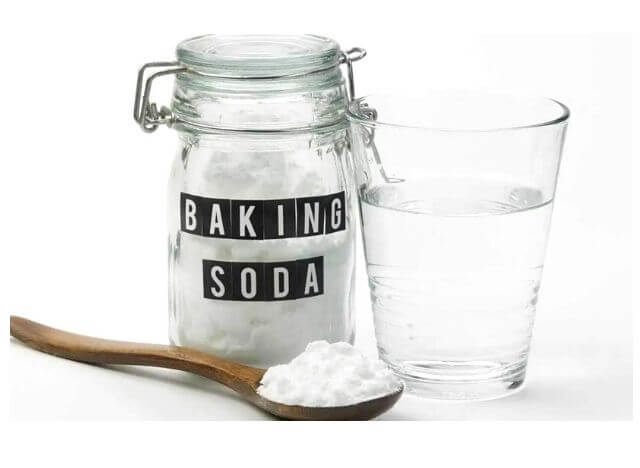
- Method 2: Mix 20ml lemon juice, 2 tablespoons of salt, and half cup of warm water. Stir and soak the cloth towel in the mixture.
- Method 3: Use vinegar. Boil 100ml vinegar and add salt. Let it cool down and dip a towel into it for cleaning.
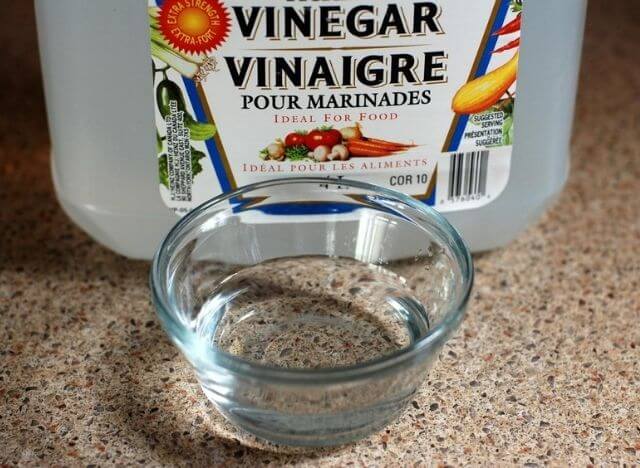
To get a better result, you can use a toothbrush or rag to scrub all the tough and long-lasting stains on any surface which can cause mold in the future. Hot water or any detergent can be used in this process.
After wiping all of them with a wet towel, you need a dry towel to clean them again. So they can be free from any existing substances.
Steps to clean the mold
It is a simple process for you to clean your fridge during a short period. Before you start, you had better unplug your refrigerator from the power source. Then, you should take the following steps:
- Clean all food containers in the fridge: It is better to have a container with a tight lid to preserve the food. Besides, you should choose a transparent container to observe the food. You can label all the boxes together with their storage time as well.
- Clean from the top to the bottom: To save time, you should start cleaning the containers from the top shelf. So there is no dirty water or food which is able to fall into the shelves below. In case the surface of your fridge has lots of stains that are difficult to clean, you would use a toothbrush along with hot water to clean. Then, clean the doors and sides with a multi-purpose cleaner and make all of them dry eventually.
- Sweep dust and cobwebs outside the fridge: Dust often appears on top of your fridge and the back of it is covered with cobwebs, especially in the below engine frame. You can use a feather duster to tidy these things.
- Empty your fridge: Remove all the things inside the fridge and sort them out. All expired food, things opened too long, or ice cubes in the freezer, etc should be thrown away.
- Remove and clean the refrigerator compartments and boxes: You should clean them with dish washing liquid or even hot water if they have any stubborn dirt. Then put them in a dry place that does not expose directly to sunlight.
- Clean the fridge on the inside: For the best result, you should use suitable cleaning solutions and tools as mentioned above to make all of them clean.
- Clean the fridge on the outside: You can use a glass cleaner or multi-purpose cleaner to get rid of any tough and long-lasting stains outside the fridge.
- Assemble all drawers and arrange your food in your fridge.

What is the best thing to clean the inside of a fridge with?
The best option to use for your fridge would be baking soda. Compared to other mold killers, baking soda is mild with pH level at 8.1 and totally safe for both humans and pets in your house.
It does not have any negative effect on all the food inside or the quality of the appliance of your fridge. Besides, it has no scent arising in the fridge after cleaning with baking soda. So, it is the best idea to clean the fridge with baking soda and water mixture.
You may also like: Best Mini Fridge Under $200
Notes when cleaning the refrigerator
Before cleaning the refrigerator, always remember to:·
- Unplug the fridge from the electrical outlet.
- Do not use strong, toxic or flammable detergents to clean the refrigerator.
- The correct way to clean the refrigerator is to use dish-washing liquid, or diluted soapy water.
- Do not use strong cleaning chemicals or brushes to avoid scratching and fading the color of the refrigerator.
- Never use hot water to clean your fridge to avoid cracking or deforming the plastic shelves.
- Wipe away moisture or water spots with a dry cloth to prevent water from entering electrical components and causing electric shock.
Related Questions
Does bleach kill mold in the fridge?
Bleach is one of the most common things used for mold clean. It does kill mold arising in your fridge. However, it is unable to get inside many porous materials like rubber. Therefore, some mold spores located deeply in them have more chances to grow back.
Is it safe to clean a fridge with bleach?
Even though bleach can kill mold, you should not use pure bleach to clean the interior of your fridge. Bleach is referred to as an intensive cleaning agent. It might be toxic if you put it close to your food. So you should prepare it in the right ratio before using it for your fridge.
Does baking soda kill mold?
Among different mold killers, baking soda is the most harmless option. It is able to kill various types of mold easily. Baking soda can even get rid of black mold and absorb moisture which attracts mold as well.
Can you mix bleach and vinegar to kill mold?
It is possible for you to use a combination of bleach and vinegar to remove all kinds of mold in your fridge more effectively. Nevertheless, you have to be very careful when using it because this mixture can cause several health issues.
What kills black mold naturally?
It has some solutions to remove all black mold naturally as below:
- Tea tree oil solution: at least 1 teaspoon of tea tree oil mixes with 1 cup of water
- Grapefruit seed extract: 10 drops of grapefruit seed extract for a cup of water
- Baking soda: keep the ratio of baking soda and water at 50-50
- Vinegar
- Hydrogen Peroxide
- Lemon juice: you can use 3 to 5 lemons for juice each time
What kills mold permanently?
To kill mold permanently, you should make use of bleach. You can easily mix bleach with water at a 1/4 ratio. Then scrub the moldy area with the damp cloth until it disappears. With bleach, it is hard for any mold to come back inside your fridge.
Conclusion
It is easy and quick for any user to clean and prevent mold in the fridge. Many types of ingredients can be used to remove even the hardest mold inside. However, for each kind, you should consider many factors before using it to make sure that there is no severe issue coming up.
References:
- What to Know About Cleaning Mold With Vinegar, Barb Umberger, Feb. 28, 2020
- Refrigerator Deep-Cleaning 101, Martha Stewart, Sep. 19, 2014
-
Mold in Your Refrigerator? Here’s What to Do, Lisa Freedman, Sep. 22, 2020

